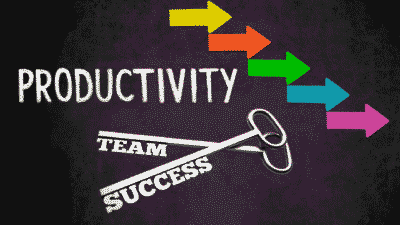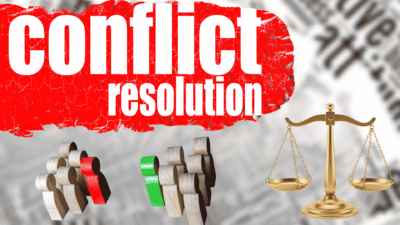A single missed deadline isn’t just a schedule slip; it’s a subtle tremor that can crack the very foundation of team trust and performance. Many leaders mistake accountability for a reactive process of assigning blame after failure. However, a true workplace accountability culture is proactive. It’s a shared ecosystem of ownership, where every individual feels a personal stake in collective outcomes, long before a project ever goes off track. This is not about fear; it is about empowerment. For you, the advanced leader, moving beyond basic management tactics to architecting such a culture is the ultimate distinguisher of sustainable success. This blueprint provides the practical, actionable steps to build it from the ground up.
1. Redefining the Goal: From Blame to Ownership
Before implementing any strategy, you must first dismantle a common misconception. Accountability is not a tool for punishment. A culture rooted in fear—where mistakes are hidden and blame is shifted—is the opposite of what we aim to build.
A genuine workplace accountability culture can be defined as an environment where individuals and teams willingly take responsibility for their actions, behaviors, and results. It’s a shift in perspective:
- From “Who is at fault?” to “What can we learn and how do we solve this?”
- From “That’s not my job” to “How can I contribute to the solution?”
- From individual defensiveness to collective problem-solving.
Imagine a ship’s crew in the middle of the ocean. The navigator is accountable for the course, the engineer for the engine, and the lookout for spotting hazards. If the ship veers off course, the goal isn’t to punish the navigator but for the entire crew to understand what happened, correct the course, and ensure it doesn’t happen again. Every person understands their role is critical to the shared mission. That is the essence of a workplace accountability culture.
2. The Three Pillars of a Thriving Workplace Accountability Culture
Building this culture isn’t about a single initiative; it rests on three interconnected and continuously reinforced pillars. Your role as a leader is to be the chief architect of these pillars.
2.1. Pillar One: Unshakeable Clarity
Ambiguity is the primary enemy of accountability. People cannot be held responsible for goals they don’t understand or expectations that were never clearly set. To build this pillar, you must act with intention.
How to Implement Unshakeable Clarity:
- Define and Communicate Roles with Precision: Go beyond generic job descriptions. For every major project, clearly outline who is Responsible, who is Approver, who needs to be Consulted, and who should be Informed. This simple matrix eliminates confusion about ownership.
- Set Crystal-Clear Expectations: Every task and objective must be defined using the SMART framework:
- Specific: What exactly needs to be accomplished?
- Measurable: How will success be measured? (e.g., “Increase customer retention by 5%,” not “Improve customer satisfaction”).
- Achievable: Is this goal realistic with the available resources?
- Relevant: How does this goal align with broader team and organizational objectives?
- Time-bound: What is the exact deadline?
- Establish Transparent Communication Protocols: Clearly define how and when progress updates are shared. Will it be a daily stand-up meeting, a weekly report, or updates in a project management tool? When everyone knows the protocol, there are no excuses for being out of the loop.
2.2. Pillar Two: Consistent Modeling from Leadership
Your team will not adopt what you do not embody. A leader who makes excuses, shifts blame, or fails to take ownership of their own missteps will instantly invalidate any accountability initiative. You are the standard.
How to Model Accountability:
- Own Your Mistakes, Openly and Constructively: When a decision you made leads to a poor outcome, address it directly with your team. For instance, a manager, Mr. Khalid, might say, “My initial project timeline was too optimistic, and that created unnecessary pressure. I take full responsibility for that oversight. Here is my revised plan to get us back on track.” This demonstrates that making a mistake is not a career-ending event, but failing to own it is.
- Hold Yourself to the Same, If Not Higher, Standard: If you set a deadline for your team, meet your own deadlines for providing them with feedback or resources. Your actions speak far louder than any memo or speech.
- Focus Your Language on Solutions: When challenges arise, consciously steer conversations away from complaints and toward action. Replace phrases like “The problem is…” with “Our current challenge is…, and our first step to address it will be…”
2.3. Pillar Three: Constructive Feedback and Consequence Systems
Accountability without feedback is just a guessing game. Team members need regular, constructive input to know if they are on track. Equally, there must be a clear, logical, and fair system of consequences for both meeting and failing to meet expectations.
How to Implement Effective Systems:
- Conduct Regular Accountability Check-ins: Do not wait for an annual review. Implement weekly or bi-weekly one-on-one meetings focused specifically on progress toward committed goals. Use a simple structure: “What did you commit to last week? How did it go? What are your commitments for this week? What support do you need from me?”
- Establish Natural Consequences, Not Punishments: This is a crucial distinction. A punishment is arbitrary and often demotivating. A consequence is a logical outcome of an action.
- Example of a Positive Consequence: A team member who consistently delivers excellent work is given more autonomy or the opportunity to lead a small project.
- Example of a Corrective Consequence: An employee who struggles to meet deadlines may be required to complete additional training on time management or follow a more detailed progress-reporting plan. The goal is always corrective and supportive, not punitive.
Visual Element Idea: The Accountability Flowchart
To clarify the process for your team, you can create and share a simple flowchart. This avoids complex or forbidden imagery and focuses on the process.
- (Start) 1. Goal Is Set (with SMART criteria)
- (Process) 2. Roles Are Defined (Who does what?)
- (Process) 3. Regular Check-ins Occur
- (Decision Point)4. Is the Goal on Track?
- Yes –> (Process) 5a. Acknowledge Progress & Continue
- No –> (Process)5b. Identify Obstacle (Clarity, Skill, or Resource Gap?)
- (Action) 6. Create a Corrective Action Plan (Training, Support, Re-evaluation)
- (Loop back to Step 3)
- (End) 7. Final Outcome Achieved & Reviewed
3. Activating the Culture: Practical Tools for Daily Leadership
With the pillars in place, you can use specific tools to make accountability a daily habit rather than a quarterly theme.
3.1. Introduce “Accountability Agreements”
At the start of a new project, facilitate a team session to create a formal “Accountability Agreement.” This is a short document, created by the team, that answers key questions:
- How will we communicate when we are falling behind?
- How will we offer constructive feedback to one another?
- What is our process for making decisions when the team is divided?
- How will we celebrate our successes and learn from our failures together?
By co-authoring these rules, the team develops a shared sense of ownership over the process itself, creating a powerful foundation for a workplace accountability culture.
3.2. Master the Art of the Forward-Looking Question
Your questions as a leader shape your team’s focus. To build accountability, train yourself to ask questions that encourage ownership and problem-solving.
| Instead of Asking (Backward-Looking) | Ask This (Forward-Looking) |
| Why isn’t this done yet? | What steps can we take to get this completed by the new deadline? |
| Who made this mistake? | What did we learn from this outcome? |
| Why did you think that would work? | Based on what we know now, what’s a better approach? |
This linguistic shift moves the team from a defensive posture to an engaged, proactive one.
4. Overcoming Inevitable Hurdles
Building a new culture will inevitably face resistance. Anticipating these challenges is key to overcoming them.
4.1. The Hurdle of “Being Too Nice”
Many leaders avoid holding people accountable because they fear conflict or want to be liked. This is a misplaced kindness. It is not kind to let a team member fail due to a lack of clear feedback. It is not kind to allow one person’s poor performance to overload the rest of the team.
- Solution: Reframe accountability as an act of respect and support. Say, “I am giving you this direct feedback because I am committed to your success and believe you can meet this standard.”
4.2. The Hurdle of Pre-existing Blame Culture
If your organization has a history of blame, your efforts will be met with skepticism. People will wait to see if it’s “real” this time.
- Solution: You must be the “circuit breaker.” The first time a team member attempts to shift blame in a meeting, you must immediately and calmly redirect the conversation. For example, if an employee named Adam says, “We’re behind because the finance department was slow,” you can respond: “Thank you for the context, Adam. Now, let’s focus on what is within our control. What can our team do today to move the project forward?” Repeating this consistently will reset the team’s norms.
Conclusion
Remember the tremor from that single missed deadline? By building a robust workplace accountability culture, you are not just patching cracks—you are reinforcing the entire foundation of your team. This culture is not built overnight with a single program or a stern memo. It is built through thousands of small, consistent actions: a clear expectation set, a mistake owned, a constructive feedback conversation, and a forward-looking question asked. The structure you create—founded on clarity, modeled by your own behavior, and supported by fair systems—is what transforms a group of individuals into a truly cohesive and high-performing team. Your legacy as a leader will not be the projects you completed, but the empowered and responsible culture you built.
Frequently Asked Questions (FAQ)
- 1. How do I start building a workplace accountability culture without my team feeling threatened?
Begin by focusing on clarity and support. Frame the initiative as a way to empower everyone and achieve goals together. Start by applying the principles to yourself, openly taking ownership of your own responsibilities and mistakes. This shows it’s a collective improvement effort, not a top-down mandate for scrutiny. - 2. What is the single most important first step a leader can take?
The most crucial first step is to master clarity. Before you can hold anyone accountable, you must ensure that expectations, roles, and deadlines are communicated with absolute precision. Conduct a “clarity audit” of your current projects to identify and eliminate any areas of ambiguity. - 3. How do you handle a talented employee who consistently resists accountability?
Address the issue directly and privately. Seek to understand the root cause—is it a lack of understanding, a resource issue, or a behavioral problem? Provide clear, specific feedback with examples. Set up a structured improvement plan with frequent check-ins. If the behavior persists despite support, you must enforce the established consequences to maintain fairness and uphold the culture for the rest of the team. - 4. How long does it realistically take to see a change?
You can see small behavioral changes within weeks if you are consistent. However, shifting a deeply ingrained culture takes time. Expect to see meaningful progress in 3-6 months and a fully embedded workplace accountability culture after a year or more of sustained effort and reinforcement.
references
Warning: The provided links lead only to the specified content. Other areas of those sites may contain material that conflicts with some beliefs or ethics. Please view only the intended page. Note: The source links are available in English only.
- Harvard Business Review November 23, 2020 Author: Ron Carucci How to Actually Encourage Employee Accountability.
Presents strategies for building accountability proactively rather than using blame. :contentReference[oaicite:0]{index=0} - NeuroLeadership Journal January 21, 2025 Author: Emma Sarro, Ph.D. Latest From the Lab: Creating a Culture of Accountability.
Explores the benefits of shifting from punitive to proactive accountability and how leaders can build structures for this. :contentReference[oaicite:1]{index=1} - Culture Partners March 14, 2025 Author: Roger Connors Landmark Workplace Study Reveals Crisis of Accountability.
Presents data from a large-scale study (40,000+ respondents) on how clarity, feedback, and goal definition affect accountability. :contentReference[oaicite:2]{index=2} - SHRM (Society for Human Resource Management) Author: SHRM editors Building a Culture of Accountability.
Guidance for leaders on how to build accountability through clarity, alignment, and communication. :contentReference[oaicite:3]{index=3} - Harvard Medical School August 15, 2019 Author not specified How Leaders Create a Culture of Accountability in Health-Care.
Focuses on clear expectations, leadership involvement, and support systems as foundations for accountability. :contentReference[oaicite:4]{index=4}







